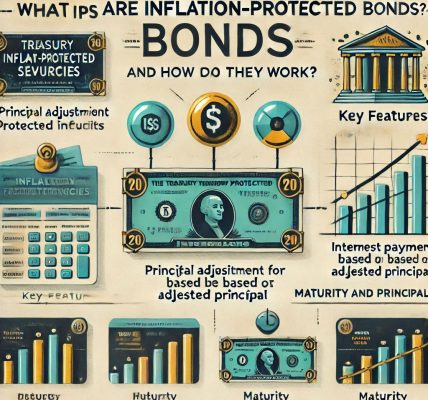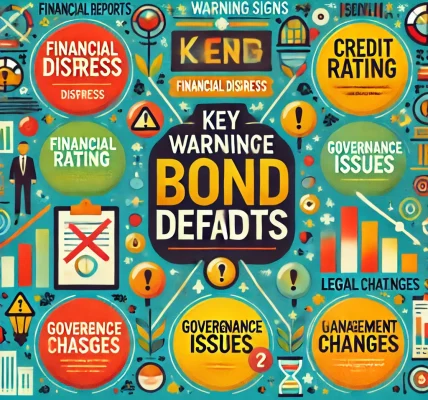In the dynamic world of bond investing, where interest rate fluctuations impact returns, step-up bonds offer a unique opportunity for investors seeking increasing returns over time. These bonds provide a rising interest rate structure, allowing investors to benefit from higher yields as the bond matures. However, like any investment, step-up bonds come with advantages and potential risks.
In this blog, we will explore the mechanics of step-up bonds, how they compare with traditional bonds, their benefits and drawbacks, and whether they fit into your investment portfolio.
📚 What Are Step-Up Bonds?
A step-up bond is a type of bond where the interest rate increases (or “steps up”) at predefined intervals during the bond’s tenure. Unlike traditional fixed-rate bonds that offer a constant coupon rate, step-up bonds allow investors to enjoy gradually increasing interest payments over the bond’s life.
🔍 How It Works:
- The bond starts with an initial coupon rate, which is lower than that of a comparable fixed-rate bond.
- At predetermined intervals (typically annually or semi-annually), the interest rate increases to a higher level.
- The bondholder receives progressively higher interest payments until the bond matures.
📊 Example:
An investor buys a 10-year step-up bond with the following rate schedule:
- Years 1-3: 3% annual interest
- Years 4-6: 4% annual interest
- Years 7-10: 5% annual interest
If the bond has a face value of $10,000, the investor receives:
- $300 per year for the first 3 years
- $400 per year for the next 3 years
- $500 per year for the final 4 years
At the end of 10 years, the investor also receives the principal amount of $10,000.
🔢 Types of Step-Up Bonds
🏦 1. Callable Step-Up Bonds
- The issuer retains the right to call (redeem) the bond before maturity.
- If interest rates fall or market conditions become favorable for the issuer, they may redeem the bond early.
- Callable bonds typically offer higher initial yields to compensate for call risk.
🏢 2. Non-Callable Step-Up Bonds
- These bonds cannot be redeemed by the issuer before maturity.
- Non-callable bonds are more predictable for investors, offering guaranteed higher rates without the risk of early redemption.
🎯 How Do Step-Up Bonds Differ from Traditional Bonds?
| Feature | Step-Up Bonds | Traditional Fixed-Rate Bonds |
|---|---|---|
| Interest Payments | Increasing over time | Fixed throughout the bond term |
| Interest Rate Sensitivity | Lower due to rising rates | High due to fixed rates |
| Risk of Early Redemption | High (if callable) | Low or none |
| Suitability in Rising Rate Environment | High | Low |
| Potential Returns | Higher over time | Fixed returns |
📈 Benefits of Investing in Step-Up Bonds
💰 1. Increasing Returns Over Time
The most attractive feature of step-up bonds is that they offer rising interest payments, protecting investors from prolonged periods of low returns.
🔐 2. Hedge Against Interest Rate Risks
Step-up bonds mitigate interest rate risk by increasing coupon payments over time. When market interest rates rise, the bond’s returns adjust accordingly, making them more attractive than fixed-rate bonds.
📊 3. Suitable for Rising Rate Environments
Step-up bonds perform well in a rising interest rate environment. Unlike traditional bonds, which may lose value as rates rise, step-up bonds provide increasing returns that align with market conditions.
🕰️ 4. Long-Term Investment Security
Step-up bonds are often favored by long-term investors looking to balance safety and returns. Since the interest rate rises over time, these bonds offer better protection against inflation.
✅ 5. Flexibility with Callable Options
Callable step-up bonds provide issuers with the flexibility to redeem the bond if interest rates decline. While this is a risk for investors, issuers compensate by offering higher initial yields.
⚠️ Risks and Drawbacks of Step-Up Bonds
📉 1. Call Risk in Callable Bonds
If the bond is callable, the issuer may redeem it before maturity, especially when interest rates fall. This deprives investors of potential future higher returns.
📊 2. Lower Initial Yields
Step-up bonds often offer lower initial yields compared to traditional fixed-rate bonds. Investors need to be patient and hold the bond until rates step up.
💸 3. Potential Opportunity Cost
If interest rates rise significantly, step-up bonds may still lag behind market rates. Investors may miss out on better opportunities available in the market.
⚖️ 4. Complex Rate Structures
Step-up bonds can be more complex to understand due to their varying interest rate schedules. Investors should be cautious about evaluating the step-up schedule and bond terms.
🕰️ 5. Inflation Risk
Although step-up bonds offer rising rates, they may not always keep pace with high inflation. In a high-inflation environment, real returns may be eroded.
🔍 Callable vs. Non-Callable Step-Up Bonds: Key Differences
| Feature | Callable Step-Up Bonds | Non-Callable Step-Up Bonds |
|---|---|---|
| Interest Rate Increases | Guaranteed but limited if called | Guaranteed over bond duration |
| Issuer’s Right to Call | Yes, after a certain period | No call option |
| Potential Returns | Limited if called | Higher returns if held to maturity |
| Risk Level | Higher due to call risk | Lower due to no call option |
📈 When Should You Consider Step-Up Bonds?
✅ 1. Rising Interest Rate Environment
Step-up bonds are ideal when interest rates are expected to rise. They allow investors to benefit from increasing coupon payments over time.
✅ 2. Long-Term Investment Goals
If you have a long-term horizon and can hold the bond until maturity, step-up bonds provide increasing returns that align with your financial goals.
✅ 3. Moderate Risk Appetite
Investors with moderate risk tolerance who seek to balance higher returns with predictable outcomes can consider step-up bonds.
✅ 4. Portfolio Diversification
Adding step-up bonds to a diversified fixed-income portfolio can reduce overall interest rate risk while enhancing returns.
❗️ When Step-Up Bonds May Not Be Ideal
⚠️ 1. Falling Interest Rate Environment
If interest rates decline, callable step-up bonds are likely to be redeemed early, reducing potential future returns.
⚠️ 2. Need for Immediate Higher Returns
Investors who require higher immediate income may find step-up bonds unattractive due to their lower initial coupon rates.
⚠️ 3. Complex Rate Structures
For investors who prefer simpler investments, the complexity of step-up bonds’ interest schedules may be a deterrent.
📊 How to Mitigate Risks Associated with Step-Up Bonds
✅ 1. Choose Non-Callable Step-Up Bonds
Opt for non-callable step-up bonds to eliminate the risk of early redemption and ensure you receive the higher rates over the bond’s tenure.
✅ 2. Diversify Across Bond Types
Combine step-up bonds with other fixed-income instruments to reduce exposure to call risk and interest rate fluctuations.
✅ 3. Analyze the Step-Up Schedule
Carefully assess the bond’s step-up schedule to ensure it aligns with your investment goals and market conditions.
✅ 4. Hold Until Maturity
To maximize the benefits of rising coupon payments, consider holding the bond until maturity rather than selling it early.
📊 Step-Up Bonds vs. Fixed-Rate Bonds: A Comparative Overview
| Feature | Step-Up Bonds | Fixed-Rate Bonds |
|---|---|---|
| Interest Payment Structure | Increasing over time | Constant throughout term |
| Call Risk | Present in callable bonds | None |
| Interest Rate Risk | Lower in rising rate environments | High in rising rate environments |
| Suitability in Rising Rates | High | Low |
| Potential Returns | Higher over time | Fixed returns |
🎨 Final Verdict: Are Step-Up Bonds Worth Considering?
Step-up bonds offer an excellent opportunity for investors seeking rising returns over time, particularly in a rising interest rate environment. While they provide protection against prolonged periods of low returns and offer predictable income growth, investors should carefully evaluate the potential risks, particularly with callable step-up bonds.
For conservative and long-term investors, non-callable step-up bonds provide a balance of safety and enhanced returns. However, understanding the bond’s step-up schedule, issuer’s call options, and potential market conditions is key to making informed investment decisions.



